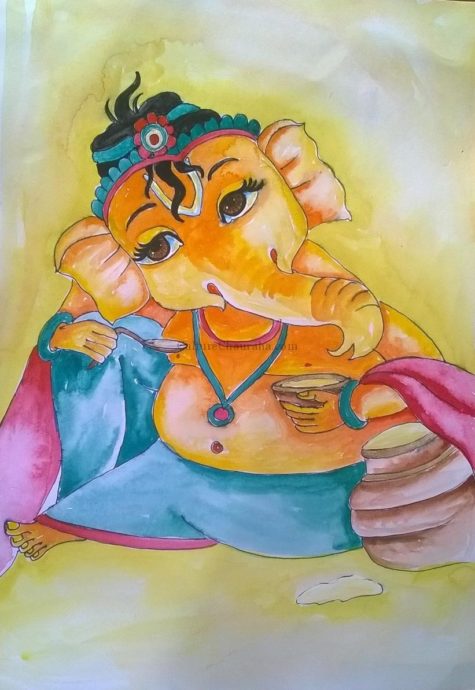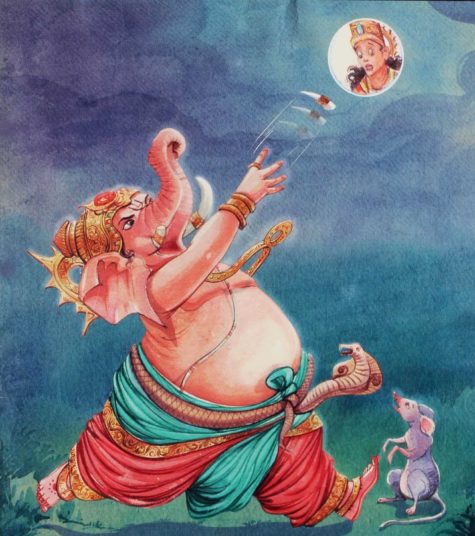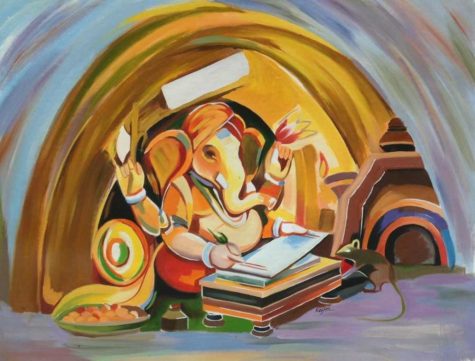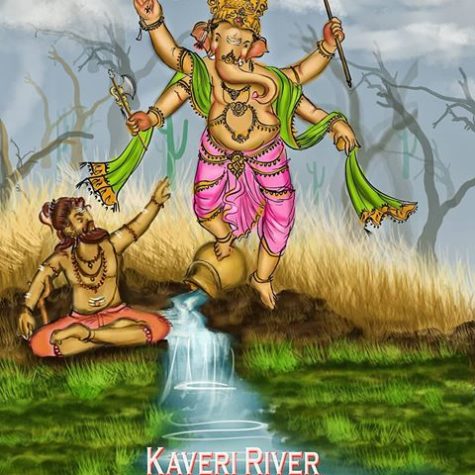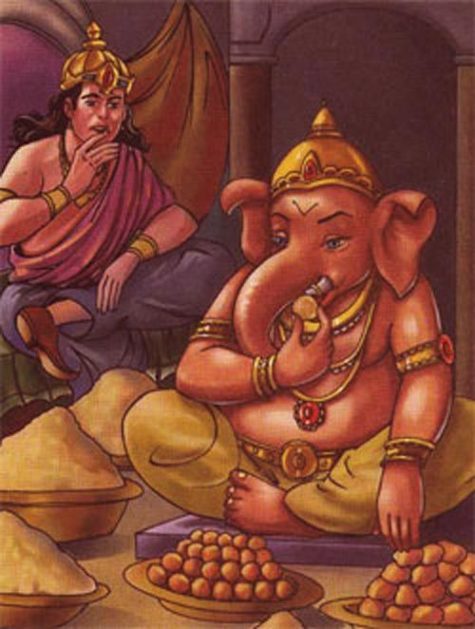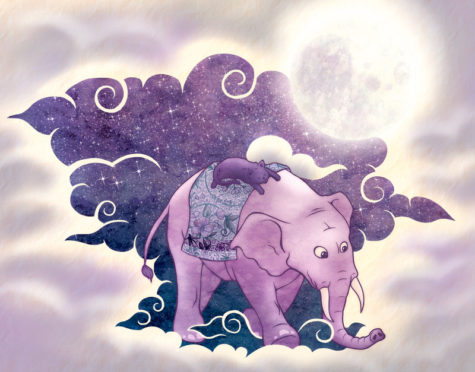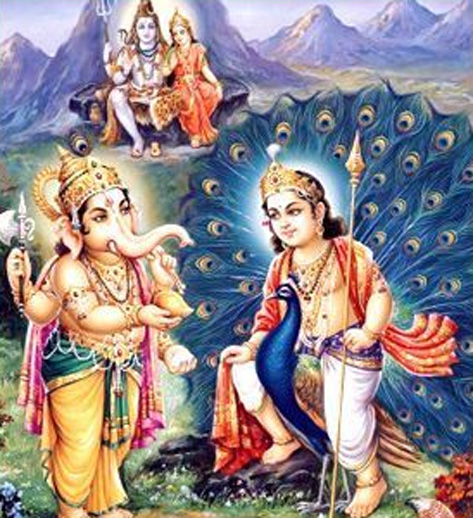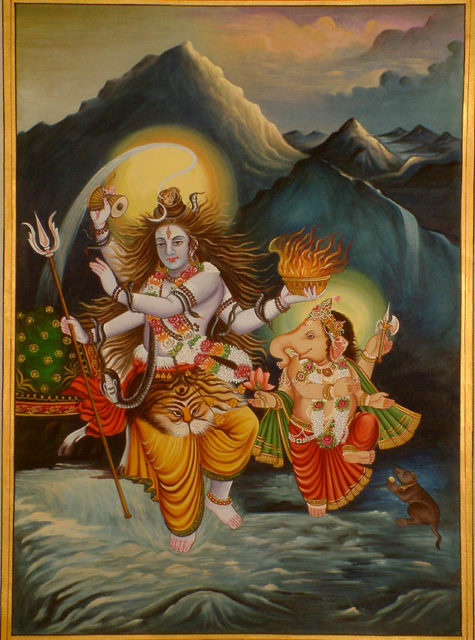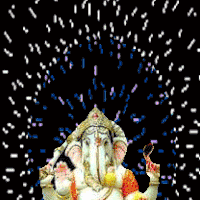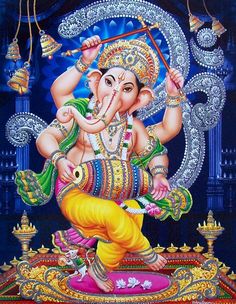Mythology
How Ganesha Became Known As God of Beginnings
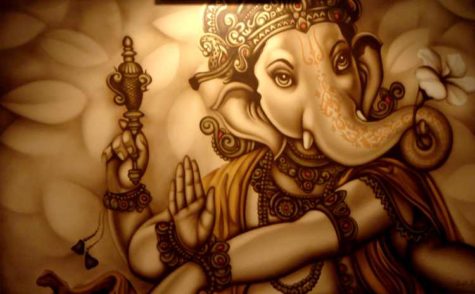
Once, Ganesha was guarding the swargalok while everyone had left to attend Lord Vishnu’s wedding. When Narad Muni saw Ganesha alone, he told him that he was not invited because he was fat and ate too much. This made Ganesha angry, who sent his mouse and asked them to dig the soil from inside and make it hollow on the way from where the marriage procession was going to pass. The army of mice dug the soil and the wheels of the chariots got stuck.
None of the gods were able to pull out the wheel so they asked for help from a man passing by. He came and took Lord Ganesha’s name and there came the wheels out! When the gods asked why he prayed to Lord Ganesha, the farmer told them that he’s the god of beginnings who removes all the hurdles. On hearing this, the gods went back to Lord Ganesha and apologized for their behavior.
How a Mouse Became Ganesha’s Vehicle
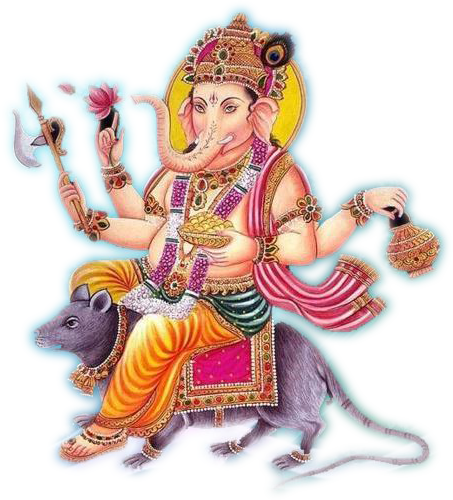
Gajmukhasur was a demon who was a devotee of Lord Shiva. He prayed and asked Shiva for a boon that no god or human would be able to harm him. Being benevolent, Shiva granted it to him but warned him against its misuse. But Gajmukhasar, being a demon, began killing people and destroying their homes. Seeing this, Shiva sent Ganesha to control him, who then turned Gajmukhasur into a mouse. And that’s how the mouse became Ganesha’s vehicle.
The Story Of The Sweet Kheer
Ganesha once entered a village in the form of a boy, holding rice in one hand and milk in the other. He began asking for help to make some kheer but everybody was busy.
He reached a poor woman’s hut who agreed to make the kheer for him. As she mixed it together and set the pot to cook, she fell asleep and the boy went out to play. On waking up, she realized the kheer had cooked and was extremely delicious.
She was too hungry and couldn’t resist it. But before eating the kheer, she took out some of it in a bowl and offered it to the Ganesha idol and then began eating the kheer. No matter how much she ate, the pot never emptied. When the boy returned, the woman gave him the entire pot and confessed that she ate before him because she was hungry. The boy replied saying he ate it too when she offered the bowl to the Ganesha idol. The woman began crying at his feet and Ganesha blessed her with wealth and health.
Moral
Before taking care of your own needs, make sure to worship God and keep something aside for others as well.
From: First Cry Parenting
The Story of The Lunar Curse
This story follows right after the proceedings of Kubera’s dinner.
After eating to his will, Ganesha’s stomach had become terribly large and he got a pot belly. Walking around with it became difficult for him and as he moved, he ended up losing his balance and stumbled and fell down. The moon, who was watching all of this, began laughing at Ganesha’s predicament.
Seeing moon humiliate him, Ganesha cursed the moon, making it completely invisible. The moon, realizing its mistake, began pleading to Ganesha for forgiveness. Relenting to his incessant apologies, Ganesha then decided to set in a cycle where the moon appeared and disappear every 15 days.
Moral
One should never laugh at somebody else’s problems or deformities. This is impolite and is not a sign of good behavior.
From: First Cry Parenting
The Story Of Ganesha’s Single Tusk
There are many versions that explain this but this Bal Ganesh story does it best.
As legend has it, Mahabharata is Ved Vyas’ creation but it is said to be written by Lord Ganesha himself. Ved Vyas approached Ganesha so that he could transcribe the epic story as he narrated it to him. The condition was that Vyas had to narrate it without break and Ganesha would write it in a single go.
As they progressed in writing the story, there came a point where the quill that Ganesha was using to write it down broke and he had no other quills with him at that moment. Ved Vyas could not stop narrating the story since the condition was already set in stone for him. Without wasting any time, Ganesha quickly broke off one of his own tusks and fashioned it into a pen, using it to continue writing the epic without interruption. This allowed the epic to become a holy one and Ganesha and Vyas ended up completing it together.
Moral
This story of Ganesha shows very clearly how necessary it is to be disciplined and determined to complete a task once you have accepted to complete it, no matter what happens. A personal sacrifice might also be necessary to complete something epic.
From: First Cry Parenting
The Story Of Kaveri’s Creation
It begins with the wish of a sage called Agastya who wished to create a river that would benefit the people staying in the southern lands. The Gods heeded his wish and presented him with a small bowl containing water. Wherever he would pour the bowl, the river would originate from there.
Agastya decided to create the origin beyond the mountains of Coorg and proceeded to travel there. On the journey, he got tired and began looking for a place to take some rest. Just then, he came across a small boy who was standing alone. He requested him to hold the pot of water while he went and relieved himself. The boy was Ganesha himself. He knew what the pot of water was for and realized that the location he was at was perfect for the river. So he set the pot down.
When Agastya came back, he saw the pot on the ground and a crow attempting to drink water from it. He shooed away the crow, who flew away but not before tipping the pot on the ground. This resulted in the river originating from that place itself, which is now called the Kaveri river.
Moral
Sometimes, things may not always work out in the way we wish them to. Nevertheless, what happens does happen for a good reason.
From: First Cry Parenting
The Story Of Kubera’s Downfall
Kubera was a renowned God who was very popular for being the wealthiest of them all in the entire universe. He had a treasure trove of wealth and would hoard everything to himself with pride.
One day, he invited many guests over for dinner, including Shiva and Parvati. But they both could not attend the dinner, so they sent over Ganesha as their representative. Ganesha’s noticed how Kubera’s behavior was and he decided to let his antics loose. He began devouring the dinner speedily and ended up finishing all the food leaving barely anything for the other guests.
Yet his hunger was not satiated. So he ended up entering Kubera’s wealth collection and start eating all the gold and wealthy items. Still unsatisfied, Ganesha then proceeded to eat Kubera himself, who ran to Mount Kailash for protection.
Shiva, seeing the reason behind Ganesha’s doing, offered a simple bowl of cereals to Ganesha. He ate them and immediately was satisfied. Kubera learned not to amass wealth greedily and agreed to distribute it among everyone.
Moral
The story shows how greed and pride can be harmful to a person and it is necessary to be considerate towards everyone.
From: First Cry Parenting
The Story Of Parvati’s Wounds
This wonderful story is a great example of how the entire world is a single unit.
Ganesha was known to be a mischievous child and he would indulge in a number of naughty activities. One time, he came across a cat while he was playing, and proceeded to mess around with it. He picked up the cat and threw it on the ground, pulling its tail and having fun with it, while the cat meowed in pain. Ganesha failed to notice it and played around until he was tired and then came back home.
On reaching Mount Kailash, Ganesha was shocked to see Parvati lying down outside the home, with wounds all over her body, and crying in pain. Ganesha rushed to her and asked her who did this. To which Parvati replied that Ganesha himself had done this to her. The cat was actually a form of Parvati, and she wanted to play around with her son. But Ganesha treated her unfairly and ruthlessly and his actions on the cat have reflected on his own mother.
Ganesha was utterly sorry for his behavior and took an oath to treat all animals in a gentle manner with care and affection.
Moral
This story gives a very important lesson that does unto others as you would want others to do unto you. And this also includes animals, being careful of them, and not causing anyone any harm.
From: First Cry Parenting
The Story Of Ganesha’s Wisdom
Lord Ganesha is called the god of knowledge and wisdom and there is a spectacular story that illustrates why it is so.
Ganesha had a younger brother called as Karthikeya. Both would get along well but, just like all other siblings, they would have moments of arguments and fights. On one such day, Ganesha and Karthikeya both ended up finding a unique fruit in the forest and grabbed it together. They refused to share it with each other and started claiming the fruit for themselves.
When they reached Mount Kailash and presented this predicament to Shiva and Parvati, Shiva made a proposition. He recognized the fruit and said that this fruit is known to grant immortality and extensive knowledge when eaten by the rightful bearer of it. To choose who gets it, Shiva proposed a challenge. He asked Ganesha and Karthikeya to circumvent their world 3 times. Whoever would do so first and return to Mount Kailash, would be the rightful owner of the fruit.
Karthikeya immediately hopped onto his pet peacock and flew speedily to complete three revolutions across the Earth. Ganesha was a little stocky compared to Karthikeya and his pet was a rat who couldn’t fly. Having listened to Shiva’s proposal properly, Ganesha started walking around Shiva and Parvati and completed three circles around them. When asked by Shiva, Ganesha replied that Shiva had asked them to circumvent their world. And for Ganesha, his parents were more than the world. They were the entire universe.
Shiva was touched and impressed by Ganesha’s wisdom and saw him as the rightful owner of the fruit.
Moral
Not only does this story give a great example of how using your wisdom can help resolve a situation smartly, but it also teaches that your parents should be given the respect and love they deserve.
From: First Cry Parenting
The Story of Shiva’s Failed Battle
Lord Shiva and Lord Ganesha have many stories together. However, this story goes beyond the relationship between father and son and teaches a very important lesson.
When the elephant head was procured and Ganesha was brought back to life, Shiva heeded Parvati’s wishes and made it a rule that before beginning with any new endeavor, it was necessary to worship Lord Ganesha and get his blessings. However, Shiva forgot that the rule applied to him as well.
On one such occasion, Shiva was heading out to war with the demons and proceeded to take his entire army along with him for it. But in the rush of leaving for the battle, he forgot to worship Ganesha first. This led to them facing many problems even before reaching the battlefield. On the way to the location of the battle, the war-carriage wheel was damaged and the progress came to a halt. This seemed like divine intervention to Shiva and he suddenly remembered that he had totally forgotten to worship Ganesha before heading for battle.
Stopping all his troops, Shiva proceeded to set up the puja then and there and completed the rituals worshiping Ganesha. With Ganesha’s blessings, Shiva proceeded ahead and he and his army were successful in defeating the demons completely.
Moral
This just goes to show that no matter who you are, once you have created a rule, it applies to everyone equally.
From: First Cry Parenting
